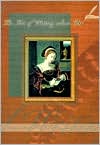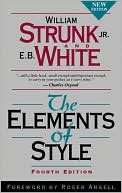COURSE DISCIPLINE and NUMBER: ART-092
COURSE TITLE: SURVEY OF ART HISTORY: RENAISSANCE TO THE PRESENT
A class meets Tuesday and Thursday Three (3)-unit (3) hour lecture
Reg ID 54708 Class Meets TTH 1:45 PM to 3:10 PM 02/01/10 to 05/28/10
Room F7
Email: barbaraallie@gmail.com
COURSE DESCRIPTION
This course is an illustrated survey of Art History from the early Italian Renaissance to the present day. Course content emphasizes architecture, painting and sculpture from the most important civilized centers of the world, and how art reflects historical occurrences and the social, political, and religious attitudes of the time. Presentation of the material is through visual presentation using current technologies that includes comparative analysis and critical evaluation of aesthetics. This course will also present alternative modes of art making, such as performance art, and non-traditional,
non-western trends in artistic expression. Field trips will be included.
STUDENT COURSE OBJECTIVES
The following objectives pertain to art history from the early Italian Renaissance to the present day, and upon successful completion of this course students should be able to:
• Keep a journal and record your thoughts about art history.
• Identify specific great works and movements of Western and Non-Western art, and place them into an historical and stylistic period.
• Recognize and identify the styles of acknowledged masters of visual art and describe the historical and cultural context in which they worked.
• Develop and apply a set of criteria to evaluate a work of art, distinguishing differences in style and content.
• Compare and contrast great works of art from within an historical period, and sort them according to time frame and stylistic category.
• Use syllogistic deductive and inductive reasoning to conclude how art reflects historical occurrences and the social, political, and religious attitudes of the time.
• Interpret and derive the meaning of a piece of art according to elements and principles of art, perceptual relationships (such as symbolism), and the historical framework in which it was created.
• Identify traditional and non-traditional media and artistic techniques and approaches.
• Use appropriate terminology in both oral and written communication and express them clearly and effectively in writing using college level spelling, grammar and style.
• Weigh opposing perspectives and points of view.
• Research and report on the life and work of a master or a period in art history.
• Cultivation and appreciation of creativity as an analytical problem solving process as well as a mode of human expression.
COURSE CONTENT:
Introduction, vocabulary and principles of art history
- Renaissance inside and outside of Italy
- Baroque
- Rococo
- Neo-Classicism
- Romanticism
- Realism
- Impressionism
- Post-Impressionism
- 20th century, pre 1945
- Modernism
- Post-Modernism
- Alternative modes of art making
- Non-traditional, non-western trends in artistic expression:
- Asia, China & Korea after 1275, Japan, Native Arts, Oceania, and Africa
- How to write about the subjects related to Art History
METHODS OF EVALUATION
Essays
Quizzes
Exams
Final Project or Final Exam
READING ASSIGNMETNS
Through the assigned reading in the text, the student will be prepared to:
respond to questions based on the lecture, identifying specific great works and movements of Western and Non-Western art, and place them into an historical stylistic period, and describe their cultural context; participate in small group discussions and activities that require analysis and research, and foster opposing points
of view; develop a criteria for critical analysis of art.
WRITING ASSIGNMENTS
Through the assigned writing assignments, students will be able to:
analyze and interpret a piece of art, and place it into an historical context;
refine independent research techniques and applications of material
GALLERY Visitations To Be Determined – I will post gallery visits on blog as class proceeds.
By viewing actual pieces of art, students will gain a better appreciation of the formal and subjective elements that embody the non-verbal, sensual aspects of visual art.
Art 092 information taken directly from Articulation Outline provided by SJCC
REQUIRED TEXTBOOK:
Gardner's Art through the Ages: A Global History and I Sold Andy Warhole Too Soon -- See information under Required Text Book,

Suggested Text:
The Art of Writing About Art by Suzanne Hudson, Nancy Noonan-Morrissey, Nancy Noonan
ISBN-13: 9780155061545
.
The Elements of Style by William Strunk, E. B. White, Charles Osgood ( Afterword)
Usually ships within 24 hours
Campus Book Store - Student Center
Contact Phone
(408) 288-3744 or (408) 288 3737
For the Bookstore hours, clink on the link below:
http://campusstore.sjcc.edu/StoreHours.aspx
COURSE MATERIALS
College ruled binder (journal)
Flash cards
Text book
GRADING
Your earned grade will depend on the effort you put into class participation, assignments, quizzes, and your final project. Assignments are due at the beginning of class on the designated date. All written work should be typed, spell-checked, and proofread before it is submitted.
METHODS OF EVALUATION
• Growth! Are you improving and developing new ideas and skills?
• Final project (to be discussed at length toward the end of the quarter).
• Failure to submit assignments or late submissions
• Effort, neatness, professional appearance, working diligently and with focus
• Punctuality and handing in all required work on time.
• Class participation: sharing ideas in class discussions and critiques, alertness, following instructions, being respectful and cooperative in the classroom – this applies to the Instructor as well!
• Points will be deducted if you fail to bring required items to class.
Point system:
1,000 possible points
Class Projects (journal & other writings & essays) = 300 points
Final Project= 200 points
Tests = 400 points ( NO hand written papers will be accepted)
Class participation = 100 points.
GRADING
Your earned grade will depend on the effort you put into class participation, assignments, quizzes, and your final project. Assignments are due at the beginning of class on the designated date. I will not accept late assignments unless accompanied by a doctor’s note.
1000 points – 800 = A
800 points – 600 = B
600 points – 500 = C
500 points – 400 = D
400 points – 200 = F
If unable to attend class, it is your responsibility to get the missing assignments form peers. The reading assignments are posted on BLOG
FINAL PROJECT (It is mandatory that you be in attendance during the final day – no exceptions)
MAKEUP EXAMS:
There will be no makeup exams. If a student has a written medical excuse for a missed exam, the percentage earned on the final will be substituted for the missed exam. If a student does not have a written medical excuse, the student will receive a zero for the missed exam.
ASSIGNMENTS
All assignments will be discussed at length in class and appropriate material related to all assignments will be supplied as the class proceeds.
QUIZZES
The quizzes will cover material presented in lectures, readings, online materials, and class activities. Quiz dates will be announced one week in advance.
CLASS PARTICIPATION
Participation grades will be determined by 1) the quality and quantity of class exercises and course activities completed and 2) participation in class. 3.) Time during class periods is limited and all students are expected to spend additional time working at home to complete the course assignments.
Additional descriptive material and course content will be presented as the courses proceeds. Please feel free to contact me about all concerns related to this class. Should you want to talk to me on a one on one basis please email me with your questions.
UNIVERSITY POLICIES;
A. Academic Integrity Statement
“Your own commitment to learning, as evidenced by your enrollment at San Jose City College, and the University’s Integrity Policy, require you to be honest in all your academic course work. Faculty members are required to report all infractions to the office of Judicial Affairs.
B. Campus policy in compliance with the Americans with Disabilities Act
“If you need course adaptations or accommodations because of a disability, or if you need special arrangements in case the building must be evacuated, please make an appointment with me as soon as possible, or see me during office hours. Presidential Directive 97-03 requires that students with disabilities register with the DRC to establish a record of their disability.”
College and Departmental Policies
A. You are responsible for understanding the policies and procedures about add/drops, academic renewal, withdrawals, incompletes, classroom behavior, and other policies described in the catalog. Please read your catalog thoroughly.

